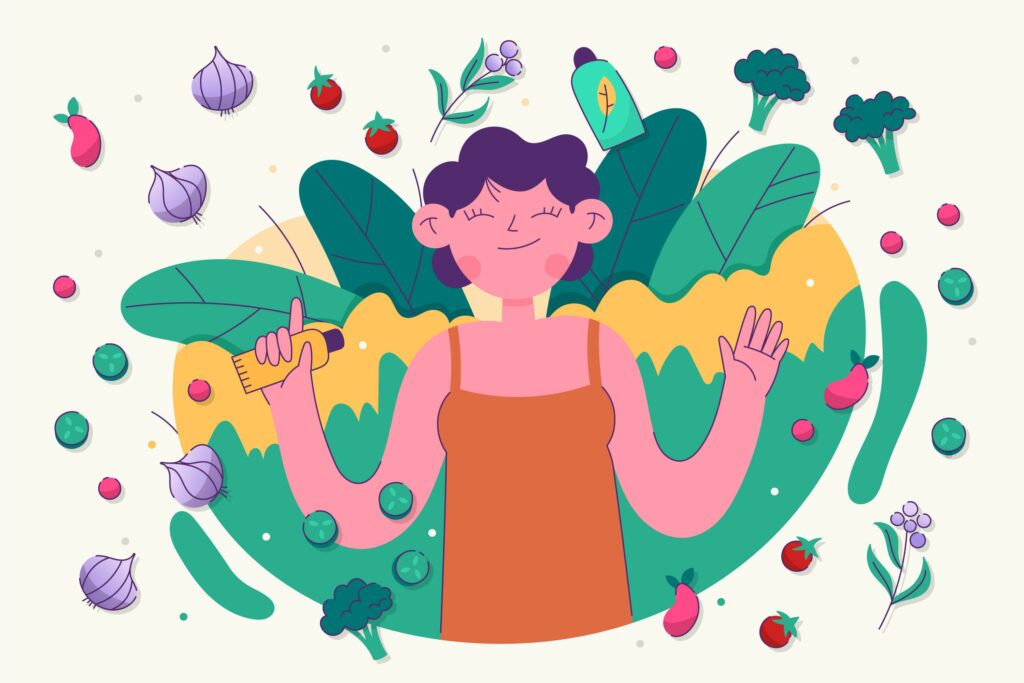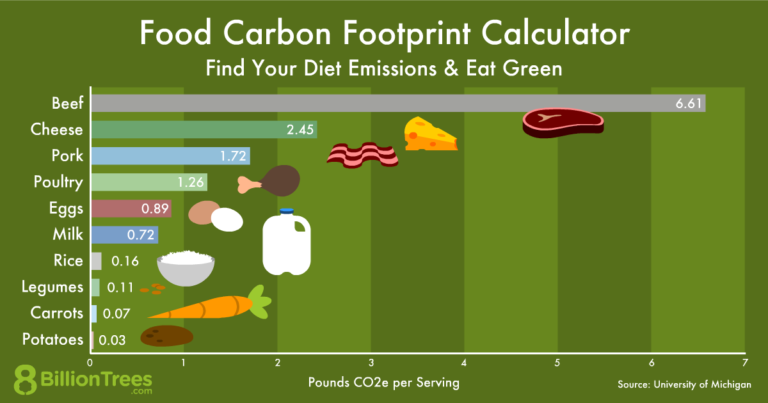What does it mean to have a sustainable diet?
“Sustainable Diets are diets with a low environmental impact, which contribute to food and nutrition security and to healthy life for present and future generations.

(…) are protective and respectful of biodiversity and ecosystems, culturally acceptable, accessible, economically fair and affordable; nutritionally adequate, safe and healthy, while optimizing natural and human resources”
Source: FAO & Biodiversity International,
International Scientific Symposium,
Final Doc, 3-5 Nov 2010
Although Sustainable diet is often associated with Healthy diet, this is not the same.
Sustainable diet
- Is this produced locally and in this season?
- Is this fairtrade cocoa?
- Does this have deforestation-free ingredients?
- Are the workers being paid fair wages?
- What’s the carbon and water footprint of this product?
Healthy diet
- Is this fattening?
- Is this low sugar/fat/salt?
- Is this high in fiber?
- Does this lower my cholesterol?
- Is this good or bad for my health?
The environmental impact of foods
Carbon FootPrint

“Sustainable Diets are diets with a low environmental impact, which contribute to food and nutrition security and to healthy life for present and future generations.
This is because the production of beef is extremely resource-intensive, demanding substantial land, water, and energy resources. Cows also produce methane during their digestive processes, a gas that has a warming potential 27–30 times higher than that of CO2 over a 100-year time period. Then lamb, prawns, fish, pork and poultry.
Water

The Food and Agriculture Organization (FAO) states that more than two-thirds of the world’s freshwater are used for food production.
Interestingly, the trend that we saw when considering the carbon footprints of foods also applies when it comes to water use. Among the top 10 most water-intensive foods in the world, 70% are of animal origin (such as cheese, fish, prawns and beef), highlighting that animal products aren’t only more carbon-intensive but also more water-intensive than plant products.
How to embrace a sustainable diet?
Our food choices – what we choose to eat, where food is produced, where it comes from and our way of thinking – are one of the most powerful levers we must tackle the major challenges of our time, such as climate change.
We are the market. Not the food itself. It’s the consumers that can make and should make the right choices when we are buying food, from whichever we buy food.
We just need to do little changes, making More Sustainable Food Choice!
1. High consumption of plant-based foods over animal-based foods
- Increase Plant-Based Meals: Incorporate more fruits, vegetables, legumes, nuts, and whole grains into your diet. Try “Meatless Mondays” or similar initiatives to reduce meat consumption.
- Experiment with Plant Proteins: Explore tofu, tempeh, lentils, beans, and other plant-based proteins as alternatives to meat. These are often lower in environmental impact.
- Try Meat Substitutes: Look for plant-based meat substitutes that are becoming increasingly available in supermarkets and restaurants.
2. Consumption of local products
- Shop at Farmers’ Markets: Support local farmers and reduce food miles by buying produce from local markets.
- Join a CSA: Community Supported Agriculture (CSA) programs allow you to subscribe to regular boxes of seasonal produce directly from local farms.
- Check Labels: When shopping at grocery stores, check labels for indications of local produce.
Eating locally sourced foods is often posed as a solution for lowering our ecological impact. However, an analysis done by Our World in Data, shows us that what we eat makes more of a difference in lowering our environmental footprints than where our food comes from.
More specifically, the data highlights that transportation accounts for just 5% of global food emissions. Land use change and farming activities, on the other hand, account for a much more significant portion.
As such, redirecting our attention from the distance food travels to the emissions associated with its production can yield better outcomes in our efforts to make more sustainable food choices.
3. Consumption of Sustainably Produced, Fresh, and Seasonal Products
- Choose Organic and Certified Products: Look for organic, Fair Trade, Rainforest Alliance, or other certifications that indicate sustainable farming practices.
- Eat Seasonally: Focus on eating fruits and vegetables that are in season. They are often fresher, tastier, and less environmentally taxing to produce.
- Grow Your Own Food: If possible, start a small garden to grow your own herbs, vegetables, or fruits.
We can analyse land use using tools like google earth, and see how much land is used to agriculture, and how much is left for nature (or how little).
Anyone who cares about the quality of the food they eat and about conserving and improving the environment in which they live can try their hand at growing vegetables, fruit, edible and medicinal herbs.
4. Zero Food Waste
- Plan Meals: Plan your meals for the week to avoid unnecessary purchases and reduce waste.
- Know how to store your food: it’s crucial to understand the art of storing food correctly. From keeping fruit and vegetables crisp to preserving leftovers for another day, your pantry and fridge can be allies in the fight against waste.
- Preserve Food: Learn methods of food preservation such as canning, fermenting, and freezing to extend the shelf life of seasonal produce.
- Understand the difference between “use by” vs “best before”: Delve into the nuances of “use by” versus “best before” dates. This knowledge empowers you to make informed decisions about your food, ensuring you consume it at its peak freshness and quality.
- Use What You Have: Let us embrace the treasures hidden in our pantry and fridge. Before rushing to the store, take stock of what we already possess and incorporate these ingredients into our meals. It’s a delightful journey of culinary creativity waiting to be explored.
- Avoid Serving Too Much: As we gather around the table, let us be mindful of portion sizes. Serving just what is needed not only minimizes leftovers but also fosters a sense of balance and mindfulness in our meals.
- Repurpose Waste Where Possible: Use leftovers creatively to make new meals. Stale bread becomes croutons, vegetable scraps transform into flavorful broths, and fruit peels can be turned into tasty snacks. The possibilities are endless, limited only by our imagination.
- Making compost: By composting, you can recycle the waste you produce and obtain quality compost. Generally, compostable items include fruit and vegetable scraps, coffee grounds, eggshells, and yard waste. Utilise the rich compost in your garden to improve soil health, boost plant growth, and reduce the need for chemical fertilisers.

